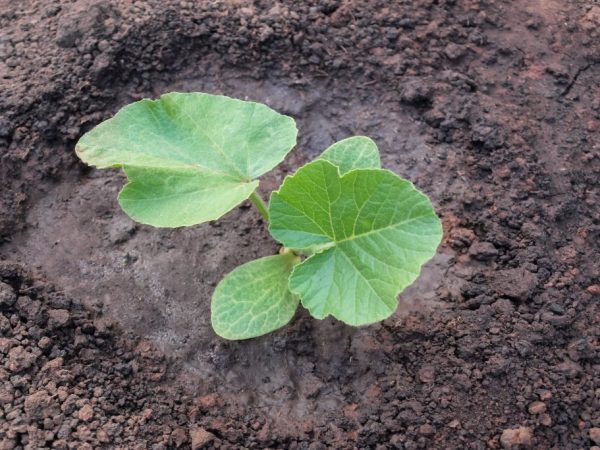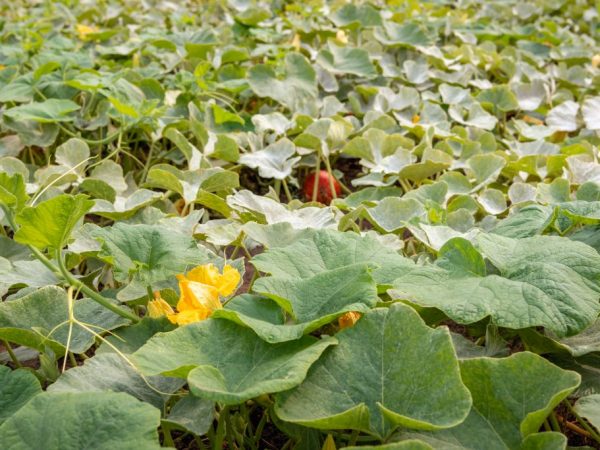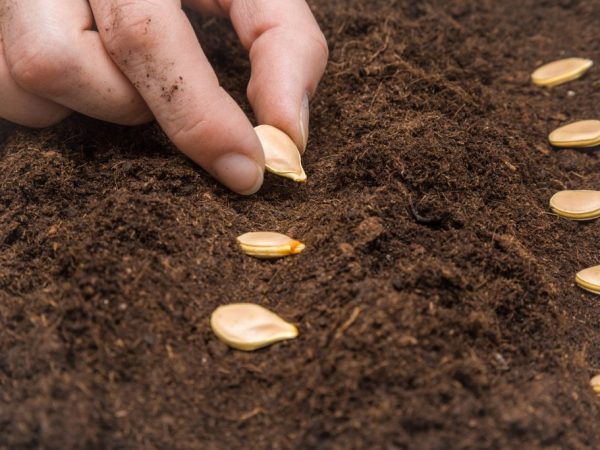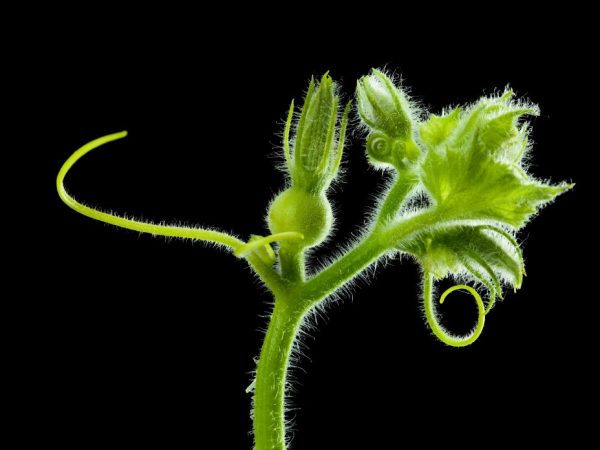Planting pumpkin seeds and seedlings
Planting a pumpkin requires a gardener to follow a number of rules. Vegetables are planted by seed and seedling methods, differing from each other in technology. Proper care after planting will help you achieve the best yields and produce large, strong fruits.

Planting pumpkin seeds and seedlings
Seed selection
Vegetable culture has more than 30 different varieties, differing in terms of ripening, taste and storage duration. The choice of seeds depends on the purpose of growing the pumpkin, taking into account regional characteristics:
- for northern areas, Siberia and the Urals, it is better to choose early-maturing varieties;
- for central Russia, not only early-ripening, but also mid-ripening varieties are suitable, and in the greenhouse in the country you can grow vegetables with late ripening periods;
- the southern regions in the garden can plant any pumpkin varieties from the first month of spring.
When choosing seeds for planting, you should pay attention to some characteristics and check them:
- freshness, i.e. shelf life within the shelf life;
- germination. It is determined by germination in wet gauze: the more seeds germinate, the higher the percentage of their germination and the less their number will be required per 1 well;
- fullness. It is determined by pre-soaking in a saline solution with a concentration of 3-5%. The seeds that have emerged from the whole pile are not suitable for sowing. Those that remain at the bottom can be used for sowing. They are washed and dried naturally.
Planting technology with seeds
Before planting a pumpkin in open ground using a seed method, you should make sure that the time for sowing is chosen correctly, because the seeds of a heat-loving plant do not germinate in unheated and damp soil.
Before sowing, it is worth preparing the seed and choosing the right place for growing pumpkin.
Material preparation
Pumpkin seeds selected for sowing must be pre-prepared so that they are guaranteed to give healthy shoots:
- they are heated for 2 hours at a temperature of 60 ° C - this will be the key to friendly entrances and accelerate germination;
- for 12 hours they are wrapped in gauze moistened with an ash solution (2 tablespoons of wood ash per 1 liter of hot water) - this will soften the hard peel of the seeds and ensure easy pecking of the sprout;
- for 12 hours, the seeds are soaked in a weak solution of potassium permanganate (with a concentration of 1%) - this will create protection against fungal diseases;
- they are hardened so that the plant will better cope with the cold in the future - for this they are kept at a temperature of 1 ° C for 2 days.
Prepared pumpkin seeds are suitable for planting in the ground, but some gardeners prefer to germinate them first at home:
- a sawdust layer is laid on the bottom of a wooden box (or any similar container);
- pour boiling water over sawdust and cover with 2-3 layers of gauze;
- spread the seeds, put gauze on top and cover with a small pile of sawdust;
- the box is covered with plastic wrap, creating a greenhouse effect.
In a couple of days, the seeds germinate, and they are planted in the garden. This method significantly increases the rate of seedling emergence. This is especially important for regions with a short summer, where the pumpkin often does not have time to ripen.
Choosing a landing site

Pumpkins need sunlight
The place for sowing pumpkin seeds is selected so that it is well warmed up by the sun's rays, because a heat-loving vegetable does not tolerate darkening well. It is good if it is on the south side along the wall of the building or a fence, which will create additional protection from the wind.
Preference should be given to sandy loam or sandy soil, which quickly warms up, with neutral acidity. It is better to plant a vegetable crop on a hill where groundwater passes at a distance of up to 1 m.
Damp areas located in lowlands are not suitable for the plant.
It is recommended to plant a pumpkin in the soil where they used to grow:
- perennial herbs;
- corn;
- wheat;
- tomatoes;
- carrot;
- beans;
- bow;
- beet.
Do not plant a pumpkin after a cucumber, zucchini, watermelon and melon. The soil for vegetable crops after them is restored after 5 years.
The land is prepared in the fall, clearing the selected place from weeds and digging up the ground. The pumpkin is distinguished by the active growth of the aboveground vegetative part, therefore, it requires a large amount of nutrition.
Before planting seeds, the soil is fertilized with rotted compost, manure or humus at the rate of 5-10 kg per 1 m², applying to light soil to a depth of 0.15-0.2 m and into heavy soil to a depth of 0.1-0.15 m.
Sowing seeds
Sowing pumpkin seeds in open ground begins as soon as the soil warms up to 12-13 ° C to a depth of at least 8-10 cm. Many gardeners choose the planting time according to the sowing calendar.
Previously, holes with a diameter of 30 cm are made in the ground, allocating approximately 1-4 m² for each plant: the smallest area is sufficient for early-ripening varieties, the largest is required for late-ripening varieties.
It is also necessary to maintain a distance between plants of 1.5-2 m, between rows - 1.5-2 m.Bush pumpkin is planted one by one in a nesting way according to the scheme 0.8 × 0.8 m or 1.2 × 1.2 m ...
The number of seeds is calculated so that there are 2-5 seeds for each hole.
If the soil was not fertilized before planting, nutrients are added immediately before sowing pumpkin seeds, putting a handful of humus, 200 g of wood ash and 50 g of superphosphate in each hole. Organics are sometimes replaced with mineral complexes. Application rate - 1 tbsp. l. per hole.
Before sowing seeds, nutrients are mixed with the soil.

The soil must be fertilized before sowing.
Sowing is usually done by hand. When the soil is dry after winter, the wells are watered with water at the rate of 2 liters each. You can plant the seeds after completely absorbing water at a distance of 3-4 cm from each other:
- into heavy soil - to a depth of 4-5 cm;
- into light soil - to a depth of 5-8 cm.
The sown seed is sprinkled with soil and mulched with peat or humus. It hatches usually 7 days after planting. A home-made greenhouse in the form of a film with slots stretched over the crops helps to accelerate germination.
Seedling planting technology
Planting pumpkin can be carried out not only by seed, but also by seedling. This method is especially good for gardeners in the northern regions.
Site selection and soil preparation
A well-lit windowsill or another warm place where the temperature is maintained at 20-25 ° C during the day and 15-20 ° C at night is chosen for home seedlings.
The nutrient substrate is made from a mixture of peat, rotted sawdust and humus, taken in a ratio of 2: 1: 1, respectively. If there is no sawdust, a soil mixture is made from equal parts of peat and humus.
For growing seedlings, a ready-made mixture is suitable for planting a pumpkin culture.
The substrate, disinfected with a weak solution of potassium permanganate, is filled in containers with a volume of 0.2 to 0.5 liters. In this case, the volume of filling should be equal to ½, so that it was possible to add soil mixture during the growth of seedlings.
In the future, the choice of a place and the preparation of the soil for transplanting seedlings is carried out according to the rules for planting a vegetable crop with seeds.
Sowing seedlings
In individual containers, seeds for seedlings are planted to a depth of 2-4 cm in a substrate moistened with water. The plantings are covered with polyethylene or glass to create a greenhouse effect. Once a day, the shelter is removed to ventilate the seedlings.
The shelter is removed from the plantings as soon as the first shoots appear.
A week after the germination of the seeds, the seedlings begin to be placed in a cooler place, where the temperature level is 4-5 points lower. This will allow them to be hardened before transplanting them to the garden bed and will prevent the seedlings from pulling out.
The main care when growing seedlings is regular watering, good lighting and feeding.
Before the seedlings are transplanted to the garden, they are fed. Suitable fertilizers are nitrophoska (1 tablespoon per 10 liters of water) and mullein (50 g per 0.5 liters of water). The mixture is kept for 3-4 hours.
When 2-3 leaves appear in the seedlings and a height of 15-20 cm is reached, it is transplanted to the garden bed. The planting scheme is 1 × 1 m. When transplanting, the seedlings are removed from the containers together with an earthen lump so as not to damage the fragile roots.
As in the case of planting seeds, fertilizers are applied to the holes if the soil has not been prepared for planting in advance.
Care

Plants need good care
Caring for sprouted seeds and seedlings transplanted to the garden bed consists of regular activities: watering, feeding, processing against diseases and pests, loosening the soil. Indoor greenhouse vegetables may require additional pollination.
Watering
The pumpkin has very large foliage, and moisture from its surface quickly evaporates, so the plant loves watering. They are carried out only with warm water. Its volume increases as the bush grows.
Reducing watering is required with active flowering. This will help improve the quality of the ovaries. As soon as the formed vegetables begin to gain weight, watering is increased in frequency and volume. As a result, by the time of harvest, the amount of liquid required for 1 pumpkin reaches 10 liters.
Stop watering the vegetable crop when the fruits grow to the desired size.
Top dressing
Frequent feeding of pumpkin with nutrients is an indispensable condition for its cultivation, because the plant is characterized by active growth of green mass and the formation of large fruits, which requires considerable effort.
The first feeding is carried out 21 days after planting the seeds. Manure or chicken droppings are introduced, diluted with water in a 1: 4 ratio. The regularity of using organic matter - up to 3-4 times a month with an interval of 7-10 days. For fertilizers, furrows are made along the perimeter of the pumpkin bush up to 6-8 cm deep and the liquid mixture is poured.
The pumpkin is fed with wood ash (200 g per 10 l of water) and sprayed with urea (10 g per 10 l of water).
Further feed is applied to the furrows made at a distance of 0.4 m from the bush.
Soil loosening
Loosening the soil near the pumpkin roots is a necessary procedure that helps to clear the soil of weeds and create conditions for air to penetrate the root system.
The first loosening is planned as soon as shoots appear, carrying it to a depth of 6-8 cm, and in the inter-row spacing - to a depth of 15-18 cm. This will allow moisture to penetrate to the roots faster. In the process of loosening, the bush is huddled, which increases its stability.
The soil is loosened for the second time after the formation of 3-4 leaves on the seedlings. At the same time, during loosening, the plantings are thinned out, leaving in each hole 2 strong sprouts of nutmeg or hard-bore varieties and 1 each of large-fruited species.
Pollination
When growing pumpkin in a closed greenhouse or in the absence of a sufficient number of pollinating insects, they resort to artificial pollination.It is easy to distinguish between male and female inflorescences:
- in men, there is an elongated leg - a stamen;
- in women, an ovary is located under the petals - a pistil.
Pollination is carried out in the morning: a male flower with pollen is plucked and carried along the female ovary.
When the male inflorescences on the pumpkin do not bloom, gardeners pollinate the inflorescences with closely related crops, such as squash. This will not harm the crop, but the seeds for subsequent sowing will be unsuitable.
Pumpkin transplant
Many gardeners often have a question whether it is possible to transplant a pumpkin from one place to another, because the realization that the wrong site has been selected for a vegetable crop sometimes comes late, when the seeds with seedlings have already been planted in a permanent place of growth.
The need for transplanting appears when too many pathogenic microorganisms accumulate in the place where the culture is grown, or the occurrence of groundwater does not allow the vegetable to fully develop.
There is no unambiguous answer to this question, tk. pumpkin culture does not tolerate transplanting well. Compliance with the rules allows you to transplant it without negative consequences during that period until 2-3 real leaves have completely blossomed.
If the threat to the harvest is great and requires an immediate plant transplant, they do it as carefully as possible, digging the vegetable around the perimeter and transferring it along with the soil.
2-3 days before the planned transplantation date, the plant is stopped to water, so that the roots can be easier to get out of the dried soil.
Pumpkin roots with the remnants of the earth are disinfected and only then they are added dropwise to a new place of growth. After transplanting, the vegetable is watered abundantly with water and fed.
Expiry date of seed
When buying seed, you need to pay attention to the date of their packaging. The shelf life of pumpkin seeds for planting, established by manufacturers, is 6-8 years. But even after this period, they remain viable and germinate.
However, the seed retains its maximum germination capacity for 4 years. This period varies depending on the conditions in which it is stored.

